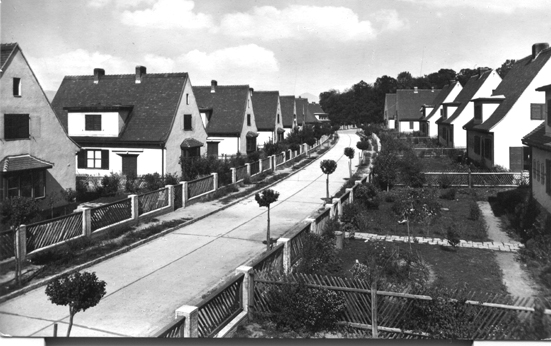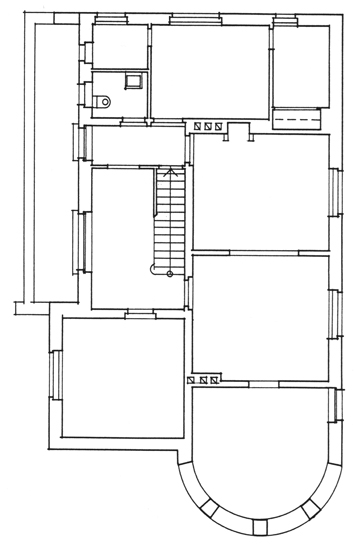| address architects project realization |
Nad zábrehom, J. Kalinčiaka, Hviezdoslavova, Kukučínova, Športovcov, Dubnica nad Váhom collective work 1942 1943 – 1944 |
The highly advanced urban design of the colony and its sensitive work with greenery are derived from imported German theories – dating from the years when the factory was administered as the Hermann Göring Werke for the Nazi war effort. The colony is a collective design, though a number of sources ascribe chief authorship to Christian Ludwig. In total, it is formed by two sections – a managerial (20 houses) and a slightly more modest workers’ section (7 duplexes and 26 freestanding houses), along with an apprentices’ dormitory and sports stadium. The managerial houses are exceptional designs for their era: particularly for the highly unusual application (outside of Hitler’s Germany) of pseudo-Roman elements typical for National Socialist residential projects. In addition to the heavy massing and high-peaked roofs with shed dormers, these features include the protruding beams below the eaves, the truncated door surrounds with segmented arches, the cylindrical corner oriels with conical roofs and the glassed bays with winter gardens.
Literature:
Friedenarbeit im vierten Kriegsjahr. Feierlichkeiten in der Werksiedlung Dubnica. Grenzbote 24. august 1943, p. 5.
DULLA, Matúš – MORAVČÍKOVÁ, Henrieta: Architektúra Slovenska v 20. storočí. Bratislava, Slovart 2002. 512 p., p. 170, 408.
Source of picture:
Archive of Matúš Dulla
Ground plan:
Department of Architecture Archive, ÚSTARCH SAV


